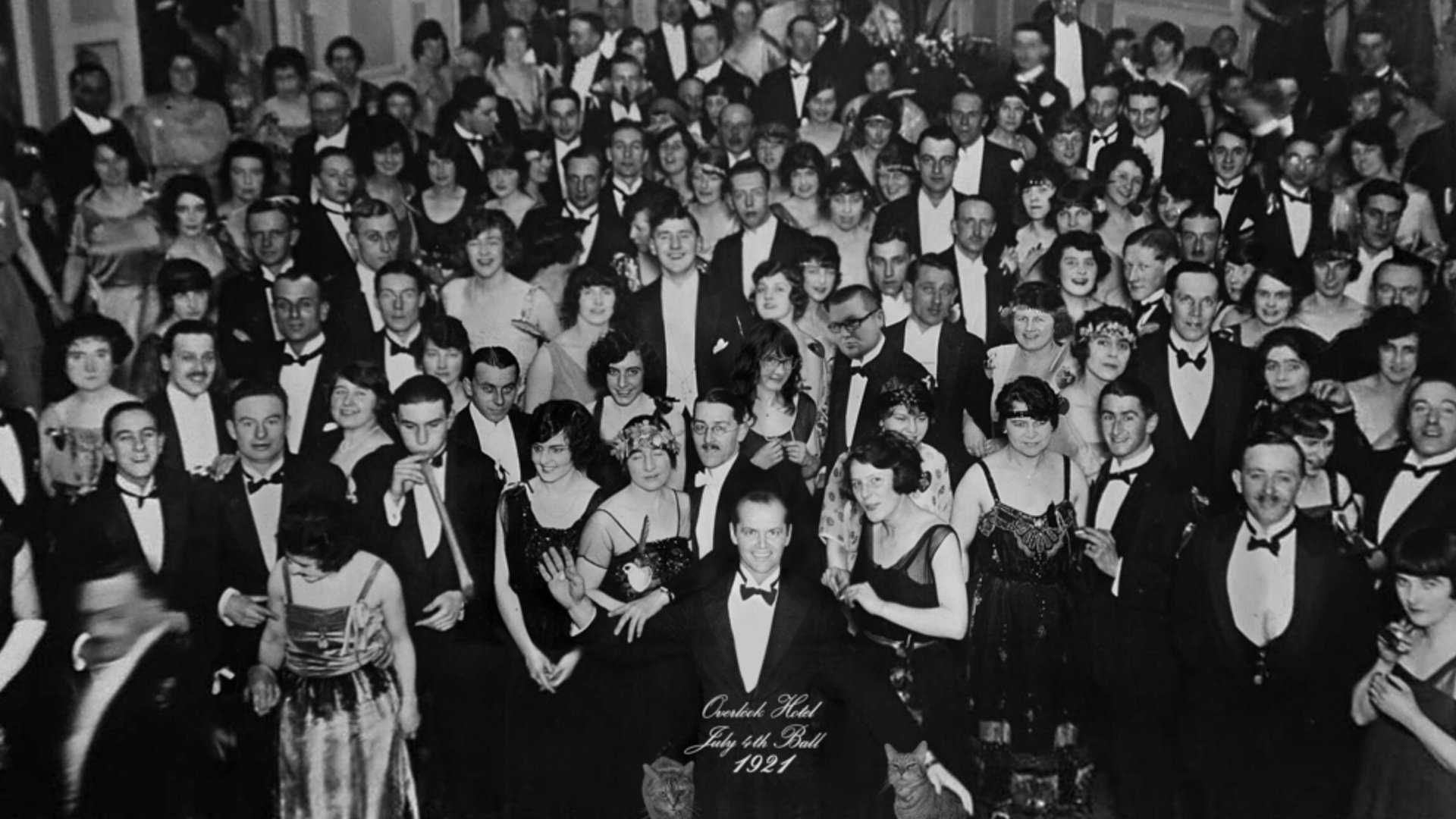Entertainment
Original Photo From ‘The Shining’ Found After 45 Years of Mystery

KENSINGTON, England — After 45 years, the original photograph used in the haunting ending of Stanley Kubrick‘s 1980 film, The Shining, has been unearthed, revealing its long-hidden origins. The image, which features Jack Nicholson’s character, Jack Torrance, amidst a crowd at a 1921 party, sheds light on fan theories regarding the film’s chilling conclusion.
On April 5, New York Times reporter Aric Toler, alongside retired British academic Alasdair Spark, announced their breakthrough. The two had spent nearly a year investigating the photo’s source, piecing together its history from various archives.
The search culminated in a discovery that the photograph was captured by the Topical Press Agency during a St. Valentine’s Day Ball held on February 14, 1921, at the Empress Rooms in the Royal Palace Hotel in Kensington, London. Toler explained, ‘At last, it has been found,’ citing the importance of identifying the dancer Santos Casani, whose image was altered to include Nicholson’s face.
Many fans of The Shining have speculated about the meaning behind this image, which shows Torrance’s ghostly presence among the spirits of the Overlook Hotel. Kubrick’s use of a historical photograph added depth to the narrative, leading some to theorize about reincarnation and haunted lineage.
In their investigation, Toler and Spark utilized facial recognition software to trace the photo back to its origins. Murray Close, a photographer who worked on the film, played a crucial role in identifying the initial source of the photograph, which further supported their findings. He confirmed that the image was indeed sourced from the BBC Hulton Archive, which is now owned by Getty Images.
The team faced challenges along the way, having initially misattributed the image to Warner Brothers archives, which do not exist. This led them to explore other historical archives, using input from various community members, including Reddit users.
When asked about the extensive process, Spark remarked, ‘Just imagine the long, strange series of events that led to Getty, which makes a billion dollars a year licensing photos to newspapers.’ This journey of discovery highlights the importance of archival research in illuminating the secrets of cinematic history.
The confirmation of the original photo discredits previous theories positing hidden messages or figures within the image. Fans had long debated the significance of the photograph and how it aligned with Kubrick’s complex storytelling.
With the original image revealed, interest in The Shining is likely to reignite. Film enthusiasts are eager to explore the film’s narrative layers, as this discovery has opened the door for new interpretations and discussions regarding its eerie themes.
As audiences reflect on this significant find, it underscores the cultural impact of The Shining and its lasting legacy in horror cinema. The journey taken by Toler and Spark exemplifies how dedication and teamwork can unearth the hidden truths of our cinematic past.












